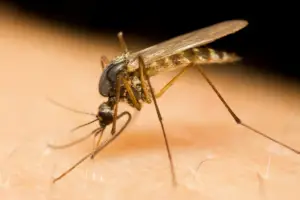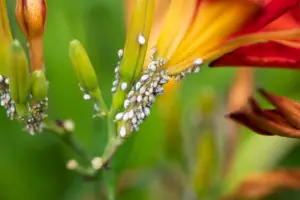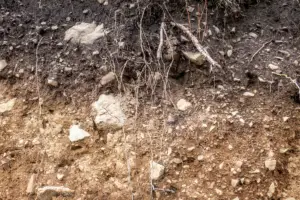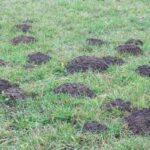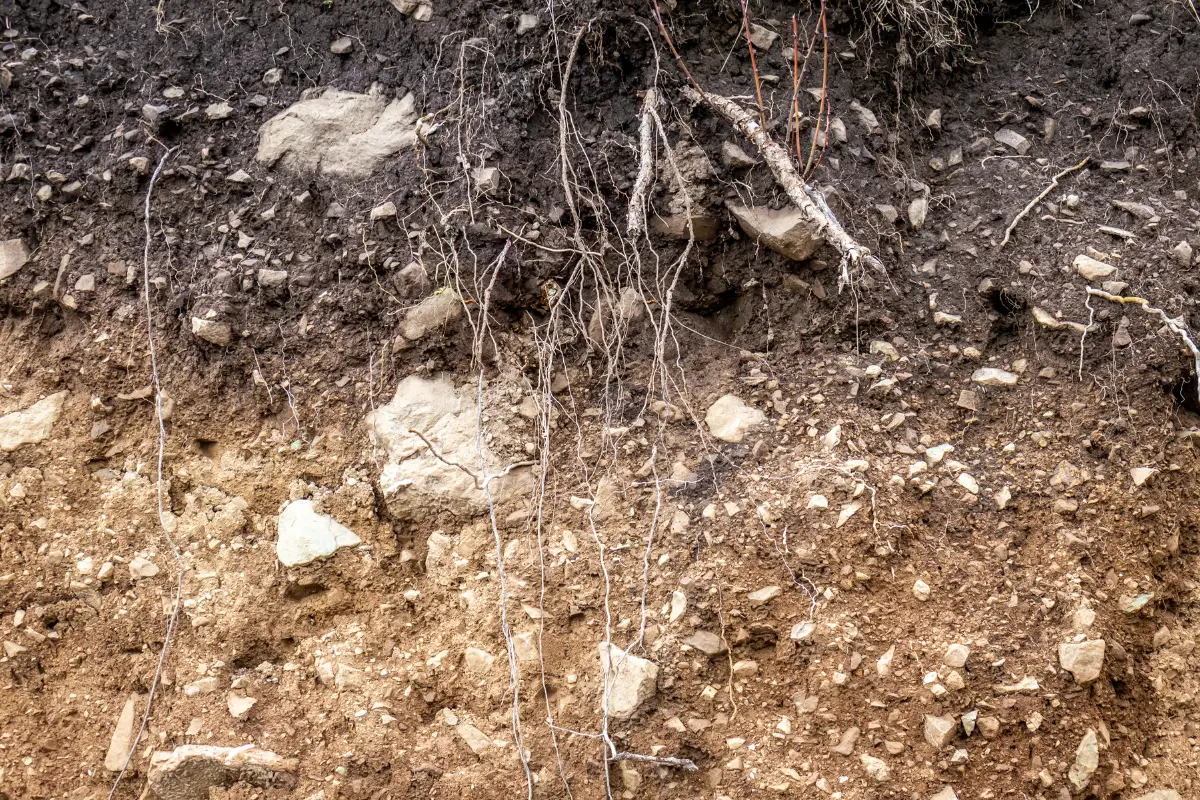Molehill soil is good for your garden. Moles bring deep soil to the surface, which has plenty of nutrients for your plants. Many gardeners also add it to their compost piles. Overall, you can use molehill soil as topsoil and expect good results.
Moles help aerate the soil, improve drainage, and bring nutrient-rich soil to the surface to use in your garden.
However, they also can ruin your yard!
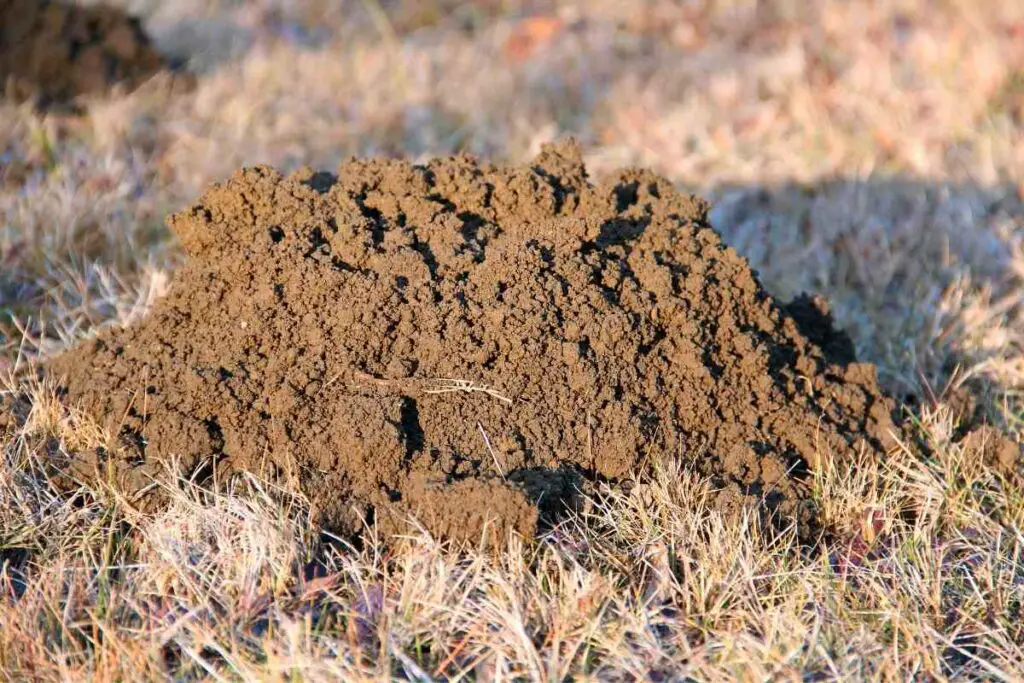
You probably won’t want them living on your property, but if you have access to molehill soil, you can use it.
Table of Contents
Why is Mole Hill Soil Good for a Garden?
Moles dig very deep into the earth.
Most of their tunnels are at least ten inches under the surface, where rich soil is.
You can tell you have moles if you see a lot of dirt mounds shaped like volcanoes around your yard.
Since moles dig deep into the ground, they bring up nutrient-rich, fresh soil at the entrances to their tunnels.
You can take the molehill soil and use it as part of your compost. Start by mixing the molehill soil with table scraps, leaves, and some sand to create great compost!
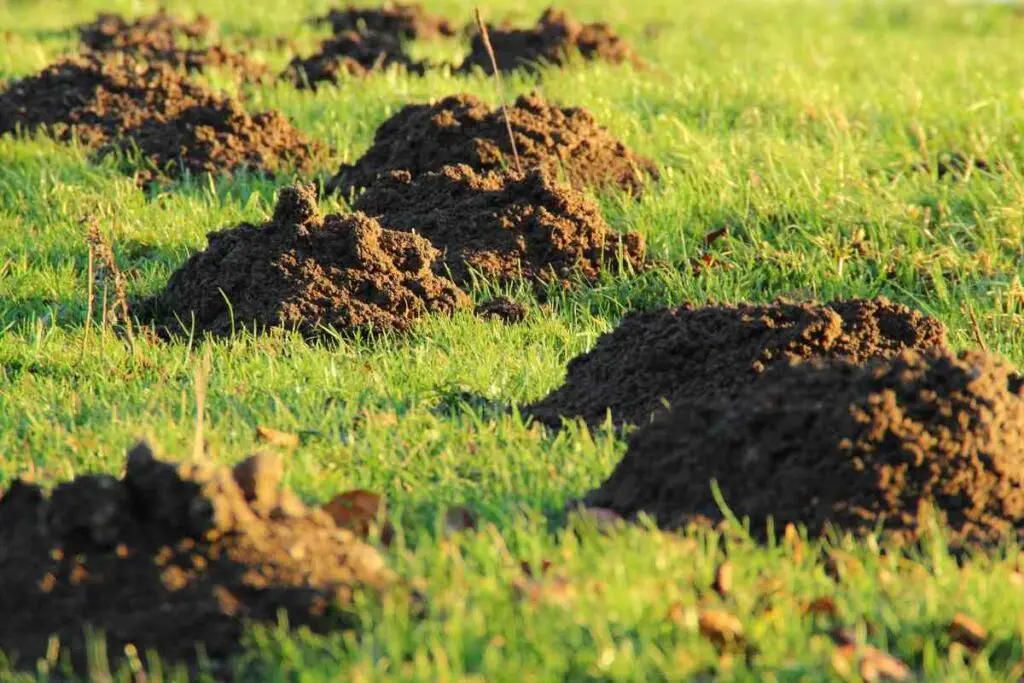
You can also use the molehill soil as topsoil for your plants.
Quality topsoil provides your plants with the nutrients they need to thrive! Your garden is sure to appreciate the dirt that comes from the molehills.
Finally – Moles add fertilizer to the soil, making it very healthy for plants. You can also use the molehill soil as a fertilizer.
Will Moles Ruin My Garden?
When you notice moles around your garden, you might feel worried.
However, moles actually won’t eat your plants! Moles are carnivores and choose insects over your produce every time.
That said, moles can still be a problem. If they dig too close to your garden, they can ruin the root system of your plants.
The moles also might create molehills right in your garden! Plus, their underground tunnel systems can attract other rodents.
However, moles aren’t all bad and can actually benefit your garden in several ways.
- SOLAR - POWERED: It operated by a solar rechargeable battery.4 hours charge of Solar Mole Repellent Ultrasonic in sunlight will be enough to keep them work for 4 days. Mole Repellent Stakes emits 3-4 seconds of low frequency pulses in every 20 seconds.NOTE:Keep solar pest repeller stakes under the sun to charge for at least 2 days before installation.
- SAFE AROUND CHILDREN & PETS: No chemicals or poison is used in this process.Mole Repellent Stakes emits 3-4 seconds of low frequency pulses in every 20 seconds.which penetrate through the soil and discourage them from entering the protected area.Humane way to repel moles from tunnelling and causing damage to lawns, vegetable plots and flowers and seedling plant roots.
- WIDE COVERAGE: Each mole repellent has an effective range of up to 7000 square feet. Recommend an installation of the yard mole repellents on every 70 feet throughout your lawn for optimal performance.
- WATERPROOF: The gopher repellent solar panel is protected in a waterproof ABS plastic housing. So the mole repellent can work even in rainy days.Keep the Solar Panel Clean - Wiping it regularly with a damp cloth.A dirty panel will reduce the amount of sunlight available to charge the unit’s batteries.
- GOOD SERVICE: Satisfying customers is our top priority. If you have any questions about mole repellent ultrasonic solar powered, please feel free to contact us. We will respond to you within 24 hou
Moles love to eat grubs, including ones that can grow into pests that kill your plants. They also help aerate the soil and add more drainage to gardens.
It’s usually best to wait out mole activity. They won’t stay in one place for long- after the grubs are gone, they move on.
Only one or two moles live on an acre of land, so you likely don’t have many in your yard.
Overall – There are many pros and cons to having moles in your garden. They can easily ruin your yard and garden while they dig around. Although, they can provide healthy soil for your plants.
Should I Remove Moles From My Garden?
Whether or not you remove the moles from your property will be up to you.
If they seem to avoid your garden, you might not have to. However, they can quickly move to other areas of your property.
In small numbers, moles aren’t a problem.
They’ll leave your plants alone, eat harmful insects, aerate your soil, and only produce a few molehills.
However, you’ll want to take action when your yard has many molehills. Mole infestations are very rare, but you should still watch out for one.
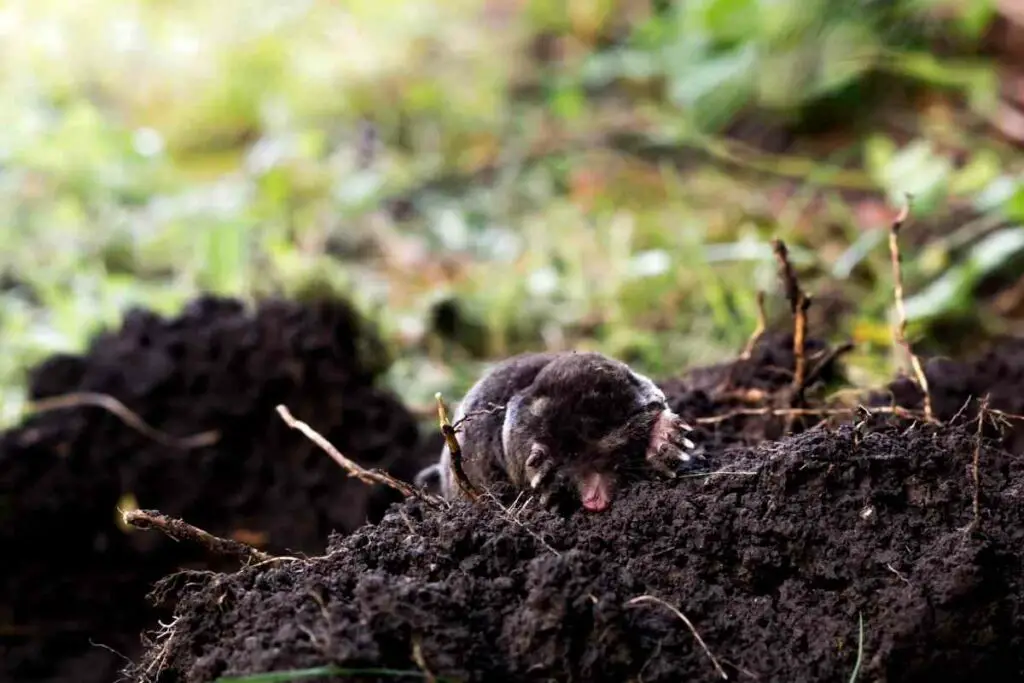
If you remove their main food source, grubs, the moles will naturally leave on their own. You can use nematodes or insecticides to kill the grubs. You can also repel the moles by combining castor oil with a small amount of dish soap.
Mix the castor oil and dish soap with a gallon jug of water.
Then, soak the mole tunnel entrances. It should repel the moles without hurting them.
Moles also hate the smell of pickled onions! You can leave a few around the entrances to their tunnels.
Lastly – Moles dislike daffodils and marigolds, so planting these around the outside of your garden will prevent the moles from digging in it! The smell is too strong for them, so they stay away.
How Do I Use Mole Hill Soil?
There are a few ways to use molehill soil.
The best way is to add it to your compost and add it to your garden later. Many gardeners recommend adding it to compost with plenty of leaves for added nutrition.
You can also sprinkle the soil around the base of your plants as is.
If you want a lot of molehill soil, start by collecting it in a sealable bucket. Once it’s full, you can use it!
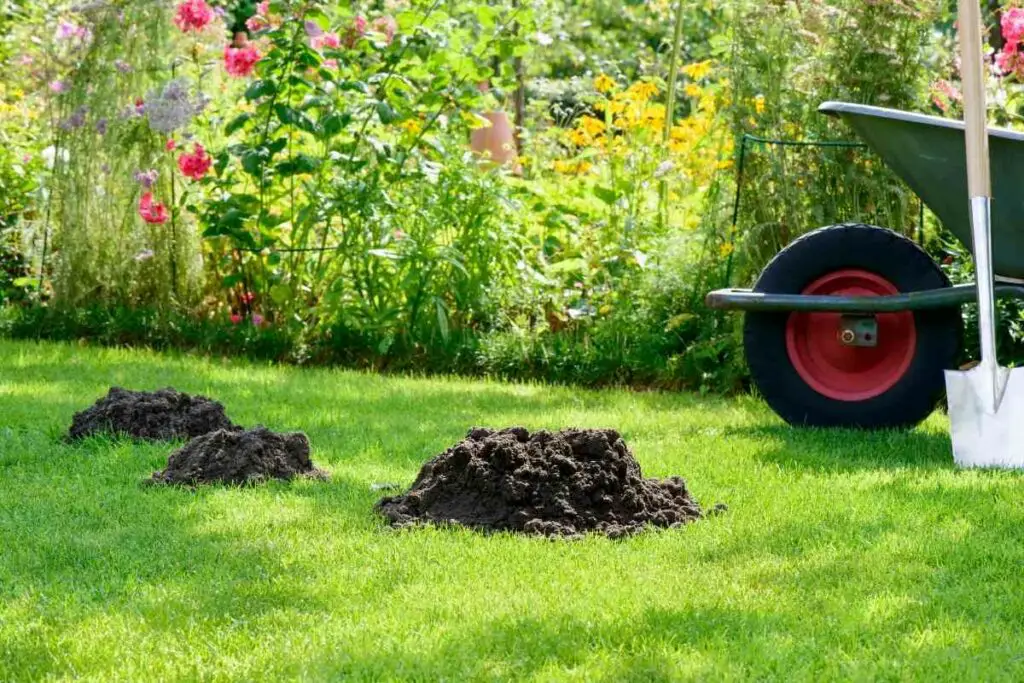
When removing molehills, scoop them up with your shovel or spade parallel to the ground.
This way, you create a flat surface to plant more grass seeds over later. You don’t want to dig into the ground because the grass won’t grow back!
Overall, you can use molehill soil however you want. It’s very rich and allows you to get rid of the molehill without wasting the soil.
Do I Have Moles or Voles?
Identifying which rodent is digging in your yard is important!
Moles are great for your garden since they won’t eat your plants and kill harmful bugs, but voles are different.
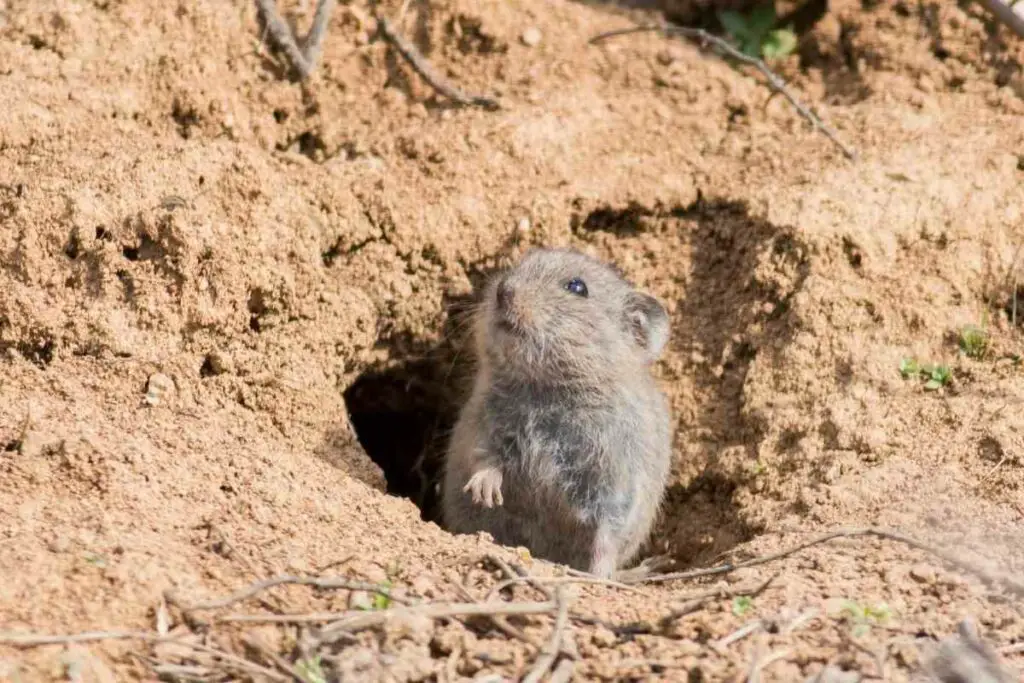
Voles eat the roots of plants and are extremely damaging to your garden.
Voles chew on roots, eat vegetables and fruits, and dig up plants.
The best way to tell which rodent is in your yard is to look at the hills they make:
- Moles make volcano-like mounds with high edges.
- On the other hand, voles have flatter tunnel systems that you might see on the surface. Their entrances also aren’t raised.
You don’t have to kill voles to get rid of them!
They also hate the smell of castor oil and will avoid it.
Sprinkling some castor oil around your property will help drive them away. Voles also don’t like peppers and other spicy foods.
Overall, your garden can benefit from moles but take severe damage from voles!
You’ll want to start controlling the voles right away if you suspect that you have them.
Final Thoughts
Molehill soil is good for your garden. Moles bring deep soil to the surface, which has plenty of nutrients for your plants.
Moles help aerate the soil, improve drainage, and bring nutrient-rich soil to the surface to use in your garden.
In small numbers, molehills aren’t a problem. They’ll leave your plants alone, eat harmful insects, aerate your soil, and only produce a few molehills.
The choice of removing them is up to you.
In Case You Missed It
- How to Tell a Dunnock from a Sparrow: Simple Tips for Birdwatchers
- Difference Between Male and Female Dunnocks?
- What Does a Dunnock Look Like?
- How to Keep Mosquitoes Away From Your Patio: Tips and Tricks
- Can Coyotes Climb Trees? Exploring Their Climbing Abilities
- How to Control White Aphids: Effective Tips for Getting Rid of Them





